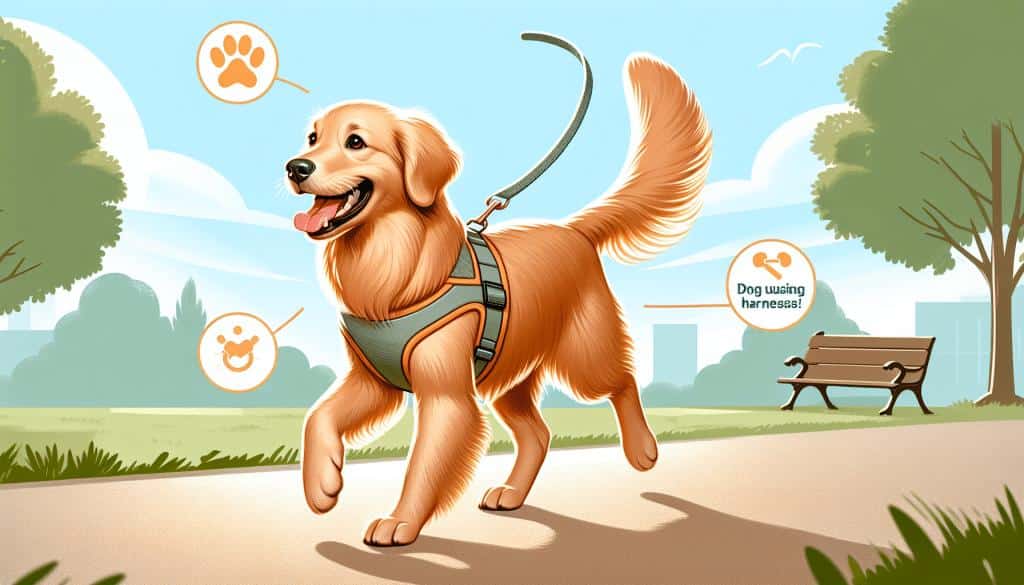So, you’ve noticed those pesky flies constantly bothering your furry best friend, particularly around their ears. Well, worry not because we’ve got you covered with some effective methods to keep those annoying flies away from your dog’s ears. Flies can not only be irritating but can also transmit diseases, so it’s essential to find ways to protect your pup. From using natural repellents to keeping your dog’s environment clean, we’ll provide you with the necessary steps to ensure your dog’s ears remain fly-free and your furry pal stays happy and healthy.

Understanding the Fly Problem
Flies are not only annoying pests but can also pose a health risk to our beloved dogs. Understanding why flies are attracted to our furry friends and the potential impact on their health is crucial for effective fly prevention. By identifying the different types of flies that can bother our dogs, we can better address the issue and keep them comfortable and safe.
Causes for Fly Attraction
Flies are highly attracted to certain factors that may be present around our dogs. The primary reasons for fly attraction include the odor of food, moisture, feces, and even the warmth generated by a dog’s body. These factors create an enticing environment for flies to gather and feed.
Additionally, certain breeds or individual dogs with skin irritations, wounds, or moist ear canals are more prone to fly infestations. Flies are attracted to these vulnerable areas, seeking moisture and warmth to lay their eggs and feed on the dog’s skin or blood.
Impact on Dog’s Health
Fly infestations can have detrimental effects on a dog’s health. Flies are known carriers of bacteria, pathogens, and parasites, which can cause various infections and diseases when they come into contact with dogs. The bites of flies can cause irritation, allergic reactions, and discomfort for our canine companions. It’s important to take prompt action to prevent these health risks and keep our dogs well protected.
Identifying Different Types of Flies
There are several types of flies that can bother our dogs, including house flies, stable flies, and blowflies. House flies are common indoor pests and are attracted to food sources, waste, and decaying matter. Stable flies are primarily found outdoors and are attracted to moist areas, such as damp fur or wounds on our dogs. Blowflies, also known as bottle flies, are attracted to open sores, wounds, or areas with decomposing tissue. By identifying these different types of flies, we can better understand their habits and tailor our prevention measures accordingly.
Preventative Measures for Fly Infestations
Prevention is key when it comes to keeping flies away from our dogs. By implementing a few simple measures and incorporating them into our daily routines, we can significantly reduce the risk of fly infestations and keep our dogs safe and comfortable.
Maintaining Cleanliness
Keeping a clean environment is essential to deter flies. Regularly cleaning our dog’s living area, removing waste promptly, and disposing of food scraps properly are crucial steps in preventing fly attraction. Ensuring all trash cans are sealed properly and not leaving any exposed food can also prevent flies from becoming a problem.
Ensuring a Fly-Resistant Environment
Creating an environment that is not fly-friendly can go a long way in preventing infestations. Repairing any screens or cracks in doors and windows can help keep flies from entering our homes and becoming a nuisance to our dogs. Additionally, implementing measures such as fly screens or netting around outdoor areas can create a barrier between our dogs and flies.
Regular Vet Check-ups
Regular veterinary check-ups are not only important for our dog’s overall health but also for fly prevention. During these check-ups, our veterinarians can examine our dogs for any signs of skin irritations, wounds, or infections that may attract flies. By treating these potential problem areas promptly, we can minimize the risk of fly infestations.

Using Natural Fly Repellents
Using natural fly repellents can be an effective and safe way to keep flies at bay without exposing our dogs to harsh chemicals. Nature has provided us with a range of essential oils, herbs, and plants that naturally repel flies.
Essential Oils That Repel Flies
Certain essential oils have been proven to repel flies effectively. Oils such as citronella, eucalyptus, lavender, and lemongrass are known for their fly-repelling properties. Diluting these oils with water and using them as sprays or applying them topically can help create a natural barrier against flies.
Herbs and Plants That Repel Flies
Several herbs and plants can act as natural fly repellents. Planting herbs like basil, mint, rosemary, and sage in our gardens or using them as potted plants around our dog’s outdoor areas can deter flies. Additionally, hanging bundles of dried herbs like lavender or wormwood near entrances or windows can also discourage flies from entering our homes.
Homemade Fly Repellent Mixtures
Creating homemade fly repellent mixtures can be a cost-effective and eco-friendly way to protect our dogs from flies. Mixing ingredients like apple cider vinegar, water, and essential oils in a spray bottle can create an effective fly repellent spray. Applying this mixture to our dog’s fur or around their living area can provide a natural shield against flies.
Commercial Fly Repellents
Commercial fly repellents offer convenience and often provide longer-lasting protection against flies. However, it is important to choose safe and effective brands that prioritize the well-being of our dogs.
Identifying Safe and Effective Brands
When selecting commercial fly repellents, it is crucial to opt for products that are specifically formulated for dogs and have been tested for safety. Reading product labels and researching reputable brands can help ensure that we are using a product that is both safe and effective in repelling flies.
Application of Commercial Repellents
The application of commercial fly repellents can vary depending on the product. Some repellents may be applied directly to our dog’s fur, while others may come in the form of collars or sprays. Following the instructions provided by the manufacturer is essential to ensure proper and effective application.
Pros and Cons of Commercial Repellents
Commercial fly repellents offer the advantage of convenience and a wider range of options compared to natural remedies. They can provide long-lasting protection and are often effective against a variety of flies. However, it’s important to be aware that some commercial repellents may contain harsh chemicals that can cause skin irritations or allergic reactions in some dogs. Choosing the right product for our dog’s specific needs and closely monitoring any potential adverse effects is important when using commercial fly repellents.

Fly Protective Gear for Dogs
Fly protective gear, such as fly masks and clothing, can provide an additional layer of defense against flies. These specialized products are designed to cover vulnerable areas of our dog’s body and minimize direct contact with flies.
Fly Masks for Dogs
Fly masks are specially designed to protect a dog’s face, particularly their eyes, ears, and muzzle, from fly irritation. These masks are typically made of a lightweight, breathable material and feature mesh panels that allow for visibility and proper airflow. When properly fitted, fly masks can effectively prevent flies from landing on our dog’s face and bothering them.
Fly Protective Dog Clothes
Fly protective dog clothes, such as lightweight shirts or vests, can cover a larger portion of our dog’s body and minimize exposed skin. These garments are often made of breathable materials that are comfortable for our dogs to wear. They can provide additional protection against fly bites, especially in areas with known fly infestations or during outdoor activities.
Safe Use of Fly Protective Gear
When using fly protective gear, it is important to ensure a proper fit and regularly check for any signs of discomfort or irritation. Gear that is too tight or ill-fitting can cause discomfort and restrict movement, leading to potential injuries. Regular inspections and cleaning of the gear are necessary to maintain its effectiveness and prevent any skin irritations or infections.
DIY Solutions for Fly Protection
If you prefer a more hands-on approach, there are several DIY solutions that can effectively repel flies and protect your dog from infestations. These homemade remedies can be simple to make and typically use common household ingredients.
Homemade Fly Sprays
Creating your own fly repellant spray is a popular DIY solution. It often involves combining ingredients such as apple cider vinegar, water, and essential oils known for their fly-repelling properties. The mixture can then be applied to your dog’s fur or living areas to create a natural shield against flies.
DIY Fly Traps
Homemade fly traps can help reduce the population of flies in and around your dog’s living areas. These traps can be made using items commonly found at home, such as plastic bottles, vinegar, or sweet liquids. By attracting and trapping flies, these DIY traps can help keep your dog’s environment fly-free.
Home-made Fly Repellant Collars
Crafting your own fly-repellant collar can provide an additional layer of protection for your dog. All you need is a regular dog collar and a piece of fabric or bandana. Soaking the fabric in a mixture of essential oils known for repelling flies and attaching it to the collar can help deter flies from landing on your dog’s neck and potentially bothering them.
Understanding Your Dog’s Behavior
Knowing how flies can distress our dogs is essential for timely intervention. Understanding their behavior, as well as teaching them how to avoid flies, can significantly reduce their stress levels and the risk of bites or infections.
Signs of Fly Distress in Dogs
Dogs may display various signs of distress when bothered by flies. These can include excessive scratching or biting, restlessness, rubbing their face against surfaces, or vocalization. Some dogs may also exhibit signs of anxiety, such as panting or pacing, when they feel overwhelmed by flies. By closely observing these behaviors, we can intervene early and provide relief for our dogs.
Teaching Your Dog to Avoid Flies
Training our dogs to avoid flies can be beneficial in reducing their exposure and potential harm. We can teach them basic commands such as “leave it” or “off” to discourage them from attempting to catch or play with flies. Consistent reinforcement and positive rewards can make this training more effective and help our dogs understand that flies are not to be interacted with.
Behavioral Changes in Fly-Infested Areas
Flies can significantly impact our dog’s behavior in areas where infestations are common. They may become anxious or hesitant to enter specific spaces or exhibit signs of stress when exposed to flies. By observing and understanding these behavioral changes, we can take steps to minimize our dog’s exposure to flies and create a more comfortable environment for them.
Medical Treatments for Fly Bites
When our dogs are bitten by flies, prompt identification and treatment are necessary to prevent complications and ensure their well-being. Understanding how to identify fly bites, potential medical complications, and when to seek veterinary help is essential.
Identifying and Treating Fly Bites
Fly bites can vary in appearance, ranging from small red dots to raised and inflamed areas on the dog’s skin. Cleanliness is crucial when treating fly bites, as gently washing the affected area with mild antiseptic solutions can help prevent infections. Applying a veterinary-recommended ointment or cream can also aid in the healing process.
Potential Medical Complications
Fly bites can lead to various medical complications if left untreated. These include skin infections, allergic reactions, and the possibility of maggots infesting the wound. Monitoring the affected area for any signs of excessive redness, swelling, discharge, or the presence of maggots is important. Seeking veterinary help if any complications arise is crucial to ensure proper treatment.
When to Seek Veterinary Help
In some cases, fly bites can worsen quickly or lead to severe allergic reactions. If you notice signs of infection, rapid deterioration of the wound, or persistent discomfort in your dog, it’s important to consult a veterinarian. They can provide professional advice, prescribe appropriate medication, and ensure the best course of treatment for your dog’s specific needs.
Grooming Practices to Keep Flies Away
Proper grooming practices are key in reducing the risk of fly infestations and keeping our dogs comfortable. Regular bathing, ear cleaning, and proper hair management can significantly contribute to minimizing fly attraction and maintaining a fly-free environment.
Regular Bathing
Regular bathing helps remove dirt, debris, and odors that can attract flies. It also keeps your dog’s coat clean and healthy, reducing the risk of skin irritations or wounds that may attract flies. Using a gentle, dog-specific shampoo and thoroughly drying your dog after bathing can further discourage fly infestations.
Ear Cleaning
Cleaning your dog’s ears regularly is essential for fly prevention, as flies are often attracted to the moisture and warmth found in the ears. Using a veterinarian-recommended ear cleanser and following proper cleaning techniques can help prevent ear infections and discourage flies from seeking refuge in your dog’s ears.
Proper Hair Management
Trimming and managing your dog’s hair can significantly reduce the risk of fly attraction. Long, matted, or dirty hair is more likely to harbor flies and make it harder to spot and treat any potential issues. Regular brushing, particularly in areas prone to matting, can help keep your dog’s coat clean and free of tangles, making it less appealing for flies.
Involving Professionals for Fly Control
Sometimes, despite our best efforts, fly infestations can persist or become overwhelming. In such cases, involving professional pest control services can provide targeted and long-term solutions to effectively mitigate fly problems.
Hiring Pest Control Services
Pest control services specializing in fly control can provide expertise and tailored solutions to address persistent fly infestations. These professionals can assess the extent of the infestation, identify the source of the problem, and implement effective control methods. Regular inspections and ongoing treatments can help maintain a fly-free environment for our dogs.
Understanding Professional Fly Control Methods
Professional fly control methods can vary depending on the extent and nature of the infestation. They may involve the use of insecticides, traps, or specialized techniques to eliminate flies and deter future infestations. These methods are typically safe for our dogs when used according to the recommended guidelines.
Long-term Solutions for Fly Problems
Professional pest control services can offer long-term solutions for fly problems by addressing the underlying causes of infestations. These may include targeted treatments for breeding areas, implementing preventive measures, and providing ongoing monitoring to ensure a fly-free environment for our dogs. Consulting with experts in the field can help alleviate the stress and inconvenience of persistent fly problems.
In conclusion, understanding the causes, impacts, and preventive measures for fly infestations is crucial for the well-being of our furry friends. By implementing a combination of natural repellents, commercial products, protective gear, DIY solutions, and proper grooming practices, we can effectively minimize the risk of fly attraction and keep our dogs comfortable and safe. Additionally, being aware of our dog’s behavior, recognizing and treating fly bites promptly, and involving professionals when needed can ensure a fly-free environment and a happier, healthier life for our beloved dogs.



